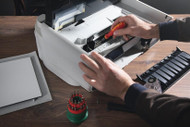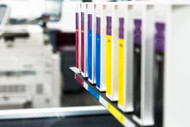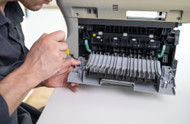The Impact of Printer Technology on Photo Printing Quality
In the fast-evolving realm of technology, printer advancements have significantly transformed the landscape of photo printing. As photography enthusiasts and professionals seek to capture and immortalize moments, the role of printers in delivering high-quality prints has become pivotal. In this blog post, we will explore how various elements, from the type of printer technology to the choice of ink cartridges, can influence the final output of photo prints.
Printer technology has witnessed remarkable advancements in recent years, with options ranging from traditional inkjet printers to modern laser printers. Each technology brings its own set of advantages and considerations when it comes to producing vivid and lifelike photo prints.
One of the key players in the photo printing domain is the inkjet printer. Renowned for its versatility and ability to produce detailed prints, an inkjet printer utilizes liquid ink cartridges that are sprayed onto the printing surface. The microscopic droplets of ink create a seamless blend of colors, resulting in sharp and vibrant images. Manufacturers have continually enhanced inkjet technology to deliver higher resolutions, wider color gamuts, and faster printing speeds.
On the other hand, laser printers have gained popularity for their speed and efficiency in handling large volumes of printing tasks. While they are traditionally associated with text and graphics, advancements in laser technology have improved their capability to produce satisfactory photo prints. However, it's essential to note that laser printers might not match the precision and color accuracy of high-end inkjet printers when it comes to photo printing.
The choice of ink cartridges plays a crucial role in determining the overall quality of photo prints. Ink cartridges contain the ink that is deposited onto the printing surface during the printing process. Different types of inks, such as dye-based and pigment-based, have distinct characteristics that impact the longevity and color vibrancy of prints.
Dye-based inks, known for their vibrant and rich colors, are commonly used in inkjet printers for photo printing. These inks are ideal for achieving a wide color gamut, making them suitable for reproducing detailed and high-quality images. However, it's important to consider that prints produced with dye-based inks may be more susceptible to fading over time compared to their pigment-based counterparts.
Pigment-based inks, on the other hand, are valued for their longevity and resistance to fading. These inks use microscopic pigment particles that are suspended in a liquid carrier. While pigment-based inks may not achieve the same level of color vibrancy as dye-based inks, they excel in providing prints that withstand the test of time, making them a preferred choice for archival purposes.
In the pursuit of exceptional photo prints, users often encounter the term dpi (dots per inch), which refers to the resolution capability of a printer. The higher the dpi, the finer the details that can be captured in the print. For photo printing, a recommended dpi of 300 or more is generally considered suitable for achieving sharp and detailed images.
While printer technology and ink cartridges are critical factors, the choice of printing paper also contributes significantly to the final output. Specialized photo papers designed for use with inkjet printers enhance color reproduction and provide a glossy or matte finish, adding a professional touch to the prints.
In the words of renowned photographer Ansel Adams, "You don't take a photograph, you make it." This sentiment holds true in the context of photo printing, where the choices made in printer technology, ink cartridges, and printing materials collectively shape the final masterpiece. As technology continues to advance, the possibilities for achieving stunning photo prints are expanding, allowing photographers to bring their visions to life with greater precision and clarity.
Conclusion:-
The impact of printer technology on photo printing quality is undeniable. The choice between inkjet printers and laser printers, along with the selection of the appropriate ink cartridges and printing paper, directly influences the outcome of photo prints. As photographers strive to capture the essence of a moment, embracing the right combination of technology and materials is key to translating those moments into timeless works of art.





